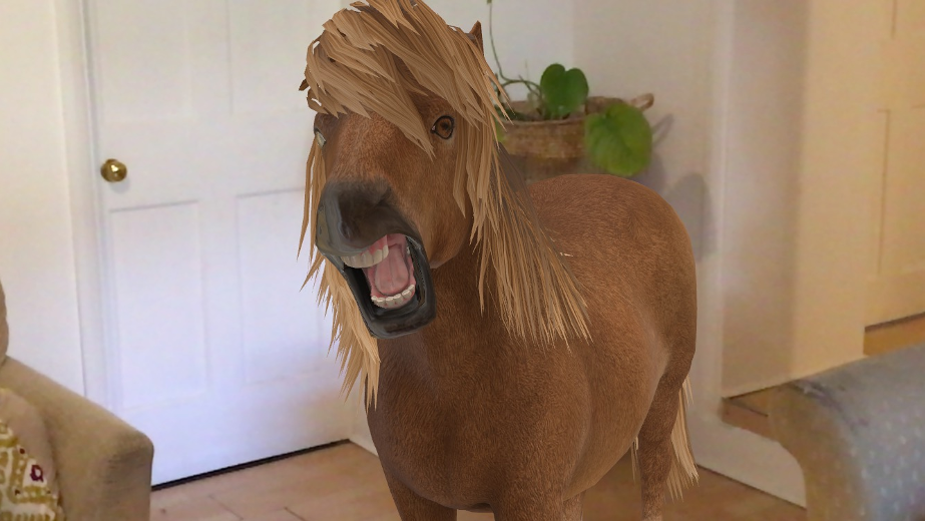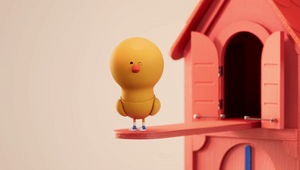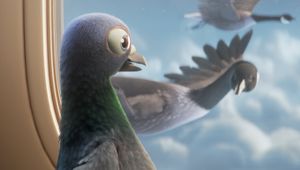
How Nexus Helped Google Bring AR Wildlife Roaring and Cawing into Our Homes

At its I/O conference in 2019, Google announced that it would be adding augmented reality objects to Search. And over the past year, the tech giant has gradually been rolling out life-sized, realistic AR animals. But it wasn’t until much of the world population found themselves confined by Covid-19 in their own human zoos that these 3D critters really came into their own.
While we can’t go and see real tigers, and the big cats featured in Netflix’s hit Tiger King don’t fill any animal lovers with happiness, the AR version is the perfect way to appreciate the majesty of the Bengal Tiger from isolation. In fact people have been turning their lockdown abodes into virtual menageries using the wonders of AR tech.
“You can view and interact with 3D objects right from Search and place them directly into your own space, giving you a sense of scale and detail,” wrote Google Lens and AR VP Aparna Chennapragada on the company blog preceding the product’s launch. The immersive function allows users to place an assortment of 3D exotic animals, including tigers, penguins, sharks, Shetland ponies, hedgehogs and many more.
All you have to do is Google “tiger” on a smartphone or tablet whereupon the option to “meet a life-sized tiger up close” will appear in the search results. Clicking on “view in 3D,” and then “move your phone” will summon the fanged feline to your home.
A quick scroll through the #Google3DAnmals hashtag on any social media platform will demonstrate the isolation magic this feature has already brought to the masses.
And it does seem like magic, so LBB’s Alex Reeves turned to Nexus creative director and lead on the project, Mark Perrett, to find out how they pulled it off.
LBB> What was the original brief? Which animals were included and what did you have to do?
Mark> We were asked to create a number of photo-real augmented reality animals that would live within Google’s Search engine and come to life in people’s homes almost as if by magic. The concept allows you to bring the life-sized animals into your environment, walk around them and look at them closely. We crafted the popular Bengal Tiger along with four animals from different kingdoms: A Shetland pony, an angler fish, a macaw and an alligator.
Many of our efforts went into accurately weaving in references from the animals’ real moves and textures so that the life-like illusion was as accomplished as possible. We animated a series of moments to make them seem ‘alive’ and present in the space. The ultimate aim was to help extend the capabilities of the now near-to indispensable Google search, and make a fun AR experience that was universally appealing.
LBB> What was the research process like and what were the big moments there?
Mark> We knew achieving the ‘real-life’ look was essential for this task and therefore most of the research process and efforts went toward that. We extensively studied visual references from each animal, working with mounts of online images and footage (because unfortunately we didn’t have a Bengal tiger or alligator to hand!) and developing the right look with our talented artists and animators here in the London studio. We also had to invest a little in our zoology studies and ensure we weren’t mixing up alligators with crocodiles or the different types of angler fish. Who knew there were so many! We had to piece together our version from various sources but we got a great end result.
LBB> What were the biggest challenges and how did you overcome them?
Mark> The main challenges we faced were technical. Working with real-time animation content for mobile has file size limitations. At times we had to trim the level of detail we’d originally put into the models and textures. The tufts of hair of the tiger, for example, were particularly challenging to depict, trying to ensure it looked as realistic as possible but within the file size limitations so that they could load quickly to give the user the best experience. The issue with file sizes are improving constantly though and we’re seeing the fidelity of real-time animation reaching incredible levels with the advent of 5G.
LBB> What are your favourite ways people have interacted with the animals since they've been live?
Mark> There’s been so many! And we’ve noticed the scaling element really enhances that experience. Huge antler ponies in the middle of the busy London streets with a Trojan Horse-like resemblance, floating angler fishes in people’s baths, tiny little alligators on office desks, camouflaged macaws in people’s gardens… Blending a familiar but distant real-life element like an exotic animal with a more unusual but juxtaposed setting is almost magical and contagiously fun.
LBB> Why do you think they've resonated so much with people in these "strange and uncertain times"?
Mark> I think while we are all stuck inside, anything that brings the outside world and nature into the home is a welcome distraction. The animals are fun to play around with but also a great educational resource for all those parents and kids now getting to grips with the joy of homeschooling. There are so many amazing resources emerging through AR and other virtual mediums, creating rich and diverse experiences that engage audiences in spontaneous and immediate ways, adding a magical layer to our world.
Some of Nexus' AR portfolio would make for great indoor entertainment too. Here's five child-friendly AR pieces to dive into:
Little Red the Inventor - Downloadable from Wonderscope app (free until June) on iOS
Notable Women - Download on iOS















